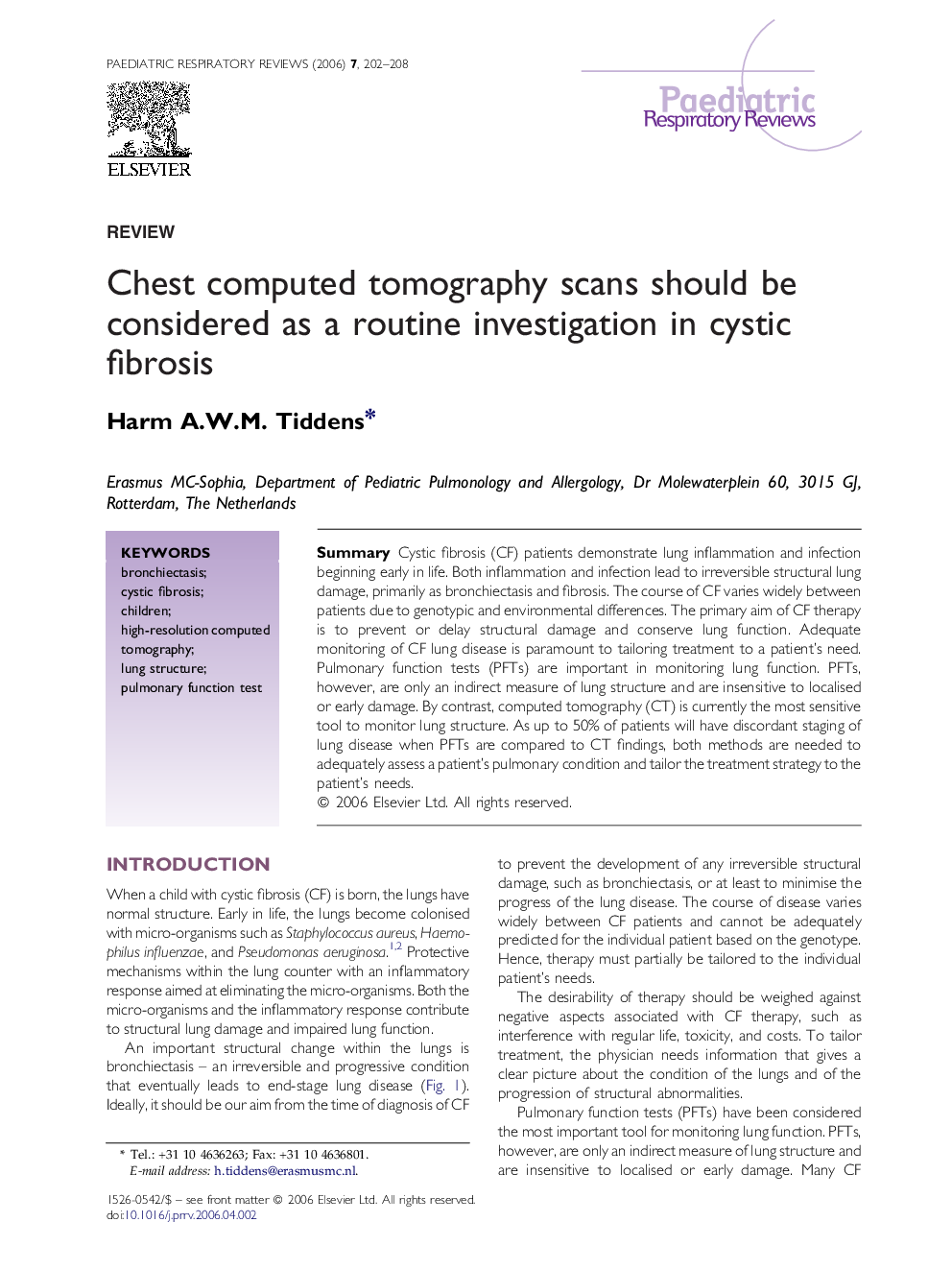| Article ID | Journal | Published Year | Pages | File Type |
|---|---|---|---|---|
| 4171707 | Paediatric Respiratory Reviews | 2006 | 7 Pages |
SummaryCystic fibrosis (CF) patients demonstrate lung inflammation and infection beginning early in life. Both inflammation and infection lead to irreversible structural lung damage, primarily as bronchiectasis and fibrosis. The course of CF varies widely between patients due to genotypic and environmental differences. The primary aim of CF therapy is to prevent or delay structural damage and conserve lung function. Adequate monitoring of CF lung disease is paramount to tailoring treatment to a patient's need. Pulmonary function tests (PFTs) are important in monitoring lung function. PFTs, however, are only an indirect measure of lung structure and are insensitive to localised or early damage. By contrast, computed tomography (CT) is currently the most sensitive tool to monitor lung structure. As up to 50% of patients will have discordant staging of lung disease when PFTs are compared to CT findings, both methods are needed to adequately assess a patient's pulmonary condition and tailor the treatment strategy to the patient's needs.
